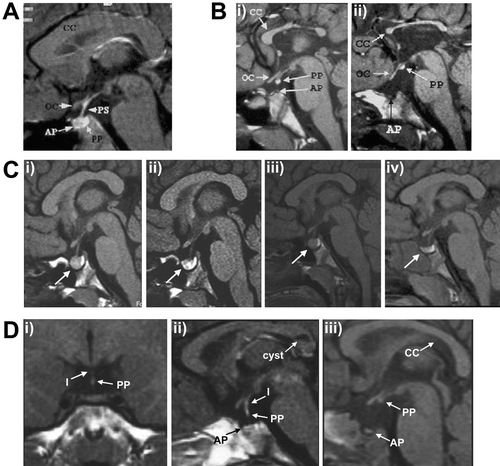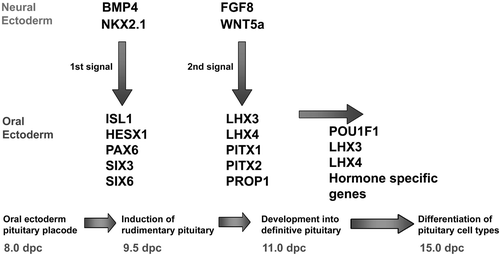Figures & data
Table I. Human mutations causing abnormal hypothalamo‐pituitary development and function.
Table II. Reported mutations in the PROP1 gene.
Table III. Mutations within the POU1F1 gene.

